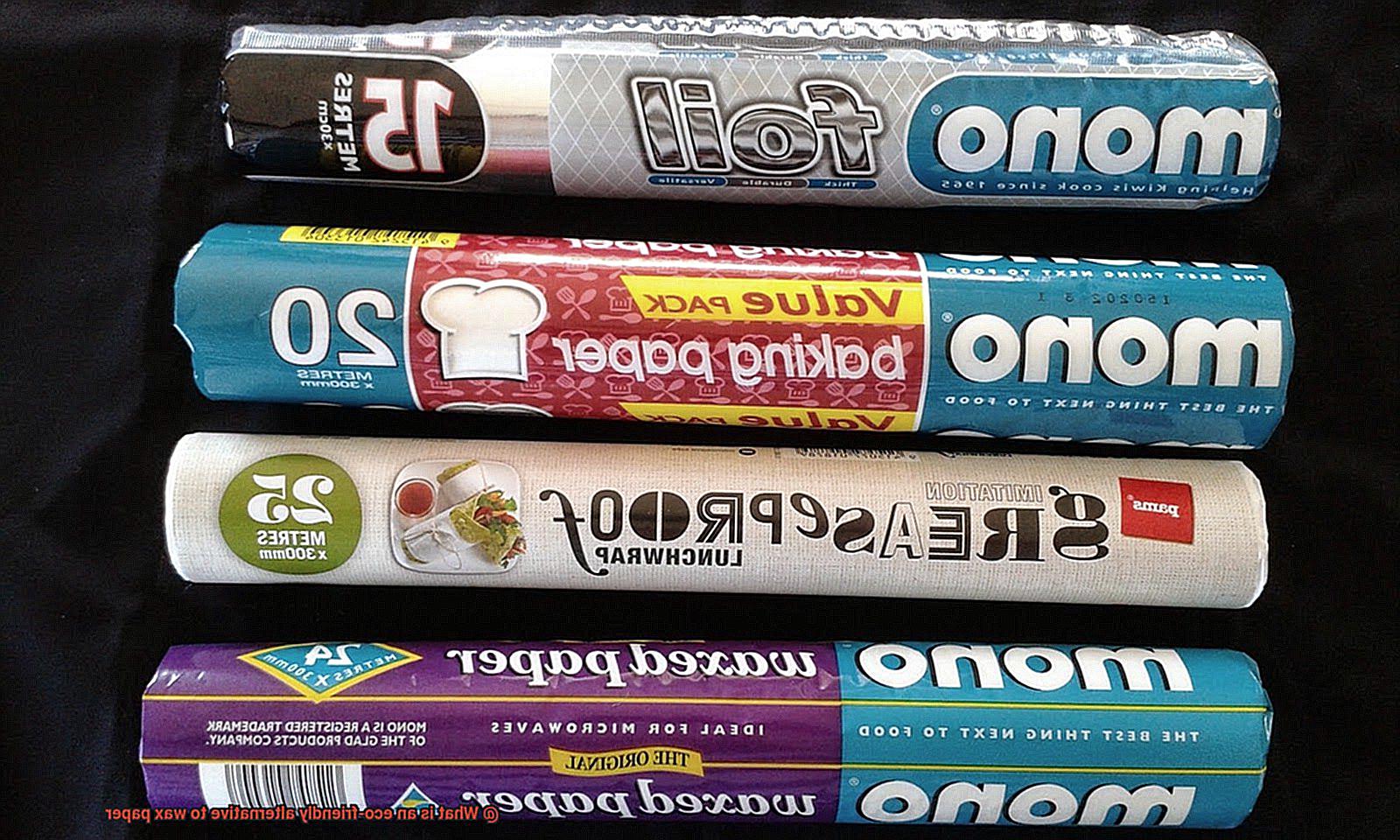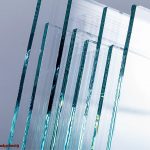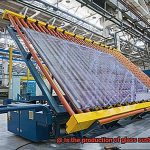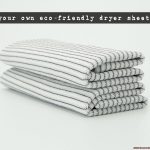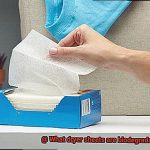Do you ever stop to consider the amount of waste generated in your kitchen when you use disposable products such as wax paper? While it may seem like a convenient option for wrapping up leftovers or lining baking sheets, wax paper is not eco-friendly. The non-renewable paraffin wax coating can take years to decompose and ends up contributing to our overflowing landfills.
But fret not. There are plenty of eco-friendly alternatives to wax paper that are equally convenient and cost-effective while being kinder to our planet. In this article, I’ll be sharing some of the best eco-friendly alternatives that you can start using in your kitchen today.
From silicone baking mats to reusable beeswax wraps and even cloth napkins, there are countless alternatives that are much safer for you and your family while also being more environmentally friendly. By making small adjustments in your everyday routine, you can make a significant impact on our planet. So let’s dive in and explore these eco-friendly options.
What is Wax Paper?
Contents
If you’re someone who loves to cook or bake, you likely know about the convenience of wax paper. This household item has been popular for decades, but as people become more environmentally conscious, it’s essential to understand its impact on the planet.
Wax paper is a type of paper coated with a thin layer of wax on both sides, making it ideal for storing food and other purposes. First introduced in the early 20th century as a replacement for parchment paper made from animal skin, it became popular because of its low cost and versatility. However, concerns have been raised about the environmental impact of wax paper in recent years.
One major issue is that wax paper is not biodegradable. Unlike other types of paper that can decompose naturally, it can take many years to break down in landfills and may release harmful chemicals into the soil and water. Additionally, the production of wax paper often involves the use of paraffin wax derived from petroleum, leading to the depletion of non-renewable resources and greenhouse gas emissions.
Luckily, there are plenty of eco-friendly alternatives available in today’s market that are biodegradable and sustainable. Silicone mats are made from food-grade silicone and can be reused multiple times. They are perfect for baking and safe to use in the oven, microwave, and freezer. Similarly, parchment paper is made from unbleached or recycled paper and coated with a thin layer of silicone to make it non-stick. It’s excellent for lining baking sheets and wrapping food for storage.
Another fantastic alternative that is gaining popularity is beeswax wraps. These wraps are made from organic cotton infused with beeswax, jojoba oil, and tree resin. They can be used to wrap sandwiches, cheese, fruits, and vegetables instead of plastic wrap or wax paper. Lastly, using reusable containers like glass or stainless steel is another sustainable option for storing food without the need for additional wrapping materials.
Why are Eco-Friendly Alternatives Necessary?
These products offer a sustainable option that can help reduce waste, promote sustainability, and mitigate climate change.
Traditional products such as wax paper may seem harmless, but they can take hundreds of years to decompose. This contributes to the buildup of plastic waste and pollution in landfills. By choosing eco-friendly options, you can reduce your negative impact on the environment and help protect our planet for future generations.
But eco-friendly alternatives are not just about reducing waste. They also use renewable resources or recycled materials, which minimizes the carbon footprint associated with production. By choosing biodegradable or compostable products, you can promote sustainability and help reduce greenhouse gas emissions.
Silicone Mats as an Alternative to Wax Paper
If you’re looking for a more environmentally friendly option than traditional wax paper, silicone mats may be the perfect alternative for you. These versatile mats are made from food-grade silicone and can be reused multiple times, making them a more sustainable and cost-effective option in the long run.
One of the greatest advantages of silicone mats is their heat resistance, which makes them suitable for use in the oven. And with various sizes and shapes available, they’re perfect for a range of cooking and baking needs. Whether it’s rolling out dough, baking cookies or roasting vegetables, these mats won’t stick to your food, making it easy to remove baked goods without leaving any residue behind.
But that’s not all. Silicone mats are also incredibly easy to clean as they can be washed by hand or in the dishwasher. Unlike other materials, they don’t absorb any odors or flavors from the food cooked on them, which means you can use them for both sweet and savory dishes without any cross-contamination.
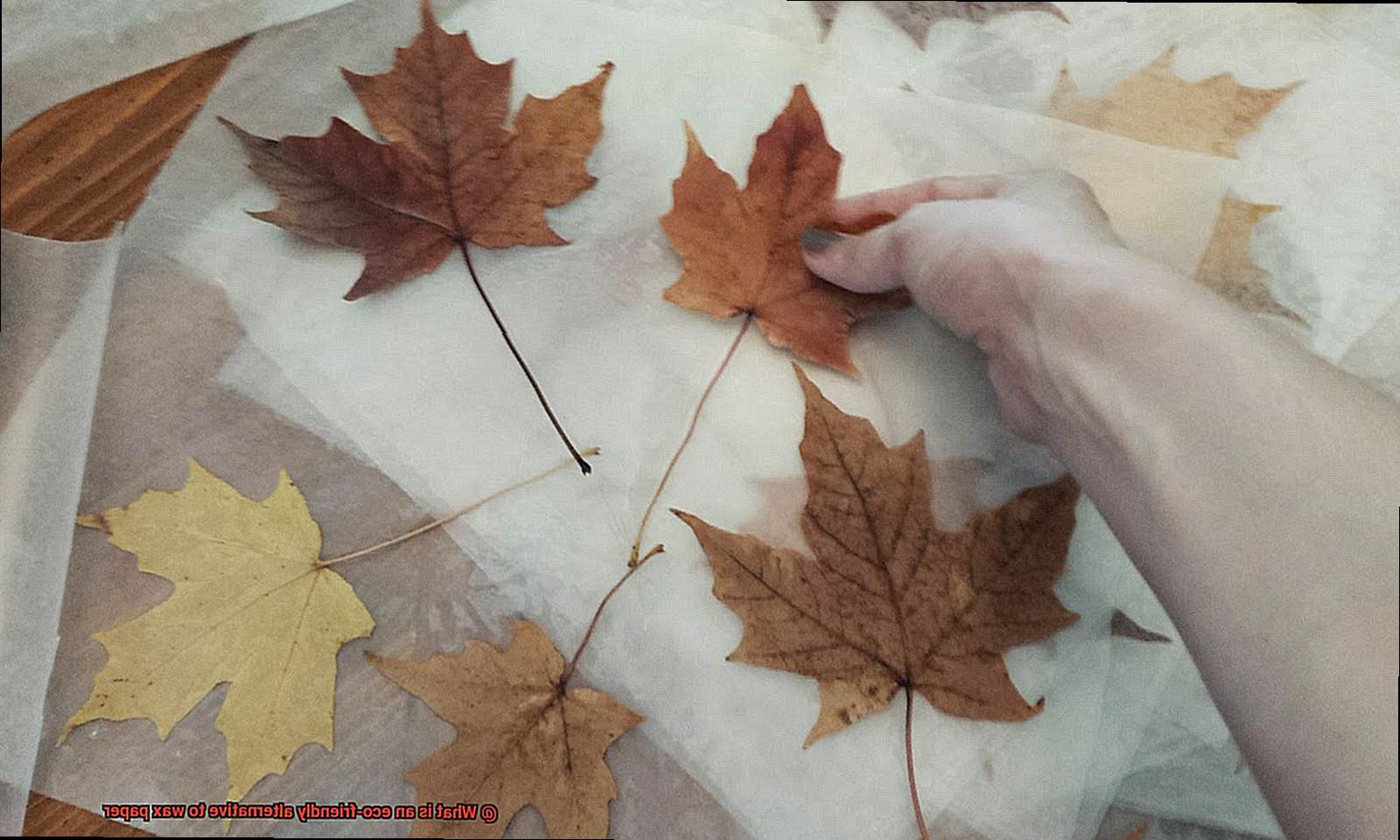
It’s true that silicone mats tend to be more expensive than their wax paper counterparts, but their durability and reusability make them a better long-term investment. Plus, any initial chemical odor dissipates quickly after a few uses and doesn’t affect the food cooked on them.
Parchment Paper as an Alternative to Wax Paper
If you’re looking for an eco-friendly alternative to wax paper that is both effective and versatile, parchment paper is an excellent choice. This kitchen staple has been around for decades and is used by home cooks and professional chefs alike for its many benefits.
Unlike wax paper, which contains paraffin wax derived from petroleum and is not biodegradable, parchment paper is made from unbleached or bleached paper coated with food-grade silicone. This coating makes it non-stick, greaseproof, waterproof, and heat-resistant up to 450°F, making it perfect for baking cookies, cakes, bread, and more.
But the advantages of parchment paper don’t stop there. One of the biggest benefits of using this alternative is its eco-friendliness. Parchment paper is biodegradable and compostable, meaning it breaks down naturally in the environment without causing harm. By choosing parchment paper over wax paper, you can reduce your carbon footprint and help protect the planet.
Another advantage of using parchment paper is that it does not leave any residue or transfer unwanted flavors or odors to your food. This means you can use it for wrapping foods, lining baking sheets or pans, and cooking without worrying about any unwanted tastes or smells.
Beeswax Wraps as an Alternative to Wax Paper
Look no further than beeswax wraps. These wraps, made from a combination of beeswax, cotton, jojoba oil, and tree resin, are a popular choice for environmentally conscious individuals.
The benefits of beeswax wraps are numerous. Not only are they reusable and washable, but they’re also biodegradable and compostable. This means less waste in landfills and more money in your pocket in the long run.
But that’s not all. Beeswax wraps can also help keep your food fresher for longer. The natural barrier created by the beeswax coating prevents air and moisture from reaching your food, reducing food waste and saving you money on groceries.
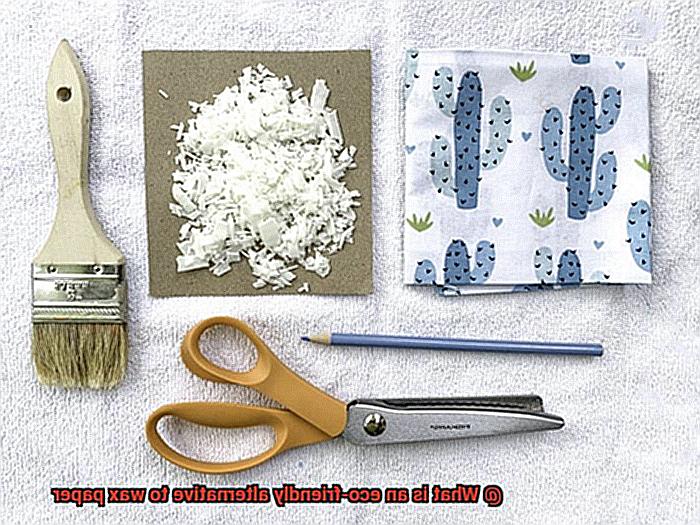
Cleaning beeswax wraps is a breeze. Simply rinse them with cold water and mild soap if necessary, then allow them to air dry before storing them away for future use. But remember to avoid using hot water or soap, as this can damage the wax coating.
And let’s not forget about the style factor. Beeswax wraps come in a variety of fun patterns and designs, making them a stylish addition to any kitchen. You can even get creative and make your own designs.
Reusable Containers as an Alternative to Wax Paper
Not only do they offer more convenience and versatility, but they also come in different sizes and shapes, making them perfect for storing different types of food items. Whether you’re packing snacks like nuts or cut-up veggies, or storing leftovers and sandwiches, there’s a reusable container for every need.
These containers are made from various materials such as glass, stainless steel, silicone, and plastic. Glass and stainless steel containers are durable and long-lasting, while silicone and plastic containers are lightweight and unbreakable. Plus, they are microwave-safe, making them an ideal choice for heating up your food.
But the benefits of reusable containers go beyond just convenience. By using them instead of disposable plastic bags or wax paper, you can significantly reduce the amount of waste you generate. This is particularly important because plastic waste is one of the biggest environmental problems we face today.
When choosing a reusable container, consider the material it’s made from, its size and shape, and whether it’s microwave-safe or not. With these factors in mind, you’ll be well on your way to making a more sustainable choice for yourself and the planet.
aaQA5rRRIcQ” >
Conclusion
To wrap up, it’s time to bid farewell to wax paper and say hello to eco-friendly alternatives that not only benefit the environment but also your wallet. Wax paper may seem like a convenient choice for food storage or baking, but its non-biodegradable nature means it can take years to decompose in landfills, contributing to the growing issue of waste.
Thankfully, there are a variety of eco-friendly options available on the market today. Silicone mats offer heat resistance and are perfect for baking, while parchment paper is both biodegradable and compostable. Beeswax wraps provide an excellent reusable option that keeps food fresher for longer while reducing waste. And reusable containers come in various shapes and sizes, making them ideal for storing different types of foods.
By opting for these environmentally friendly alternatives over traditional products such as wax paper, you can make a positive impact on our planet. These products provide sustainable options that reduce waste, promote sustainability and help mitigate climate change. So why not make small changes in your daily routine by choosing eco-friendly alternatives?
